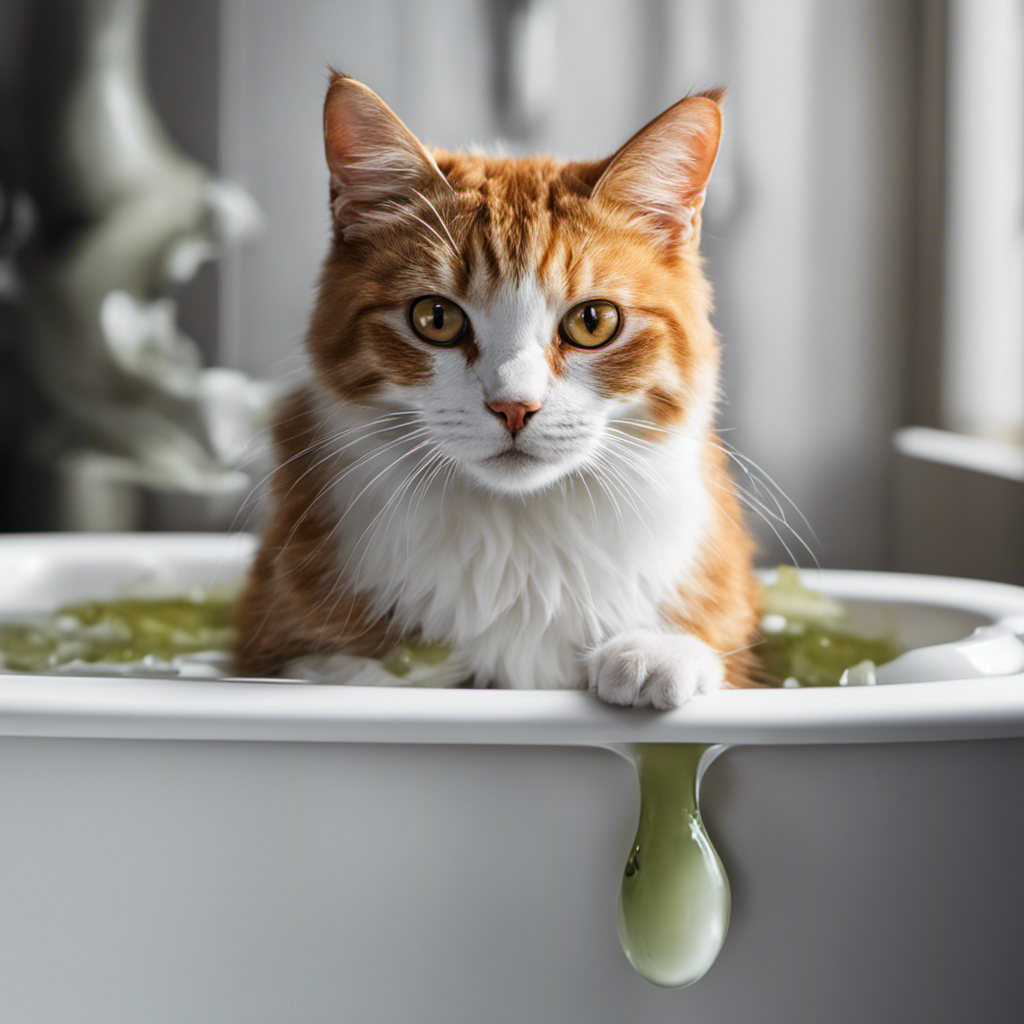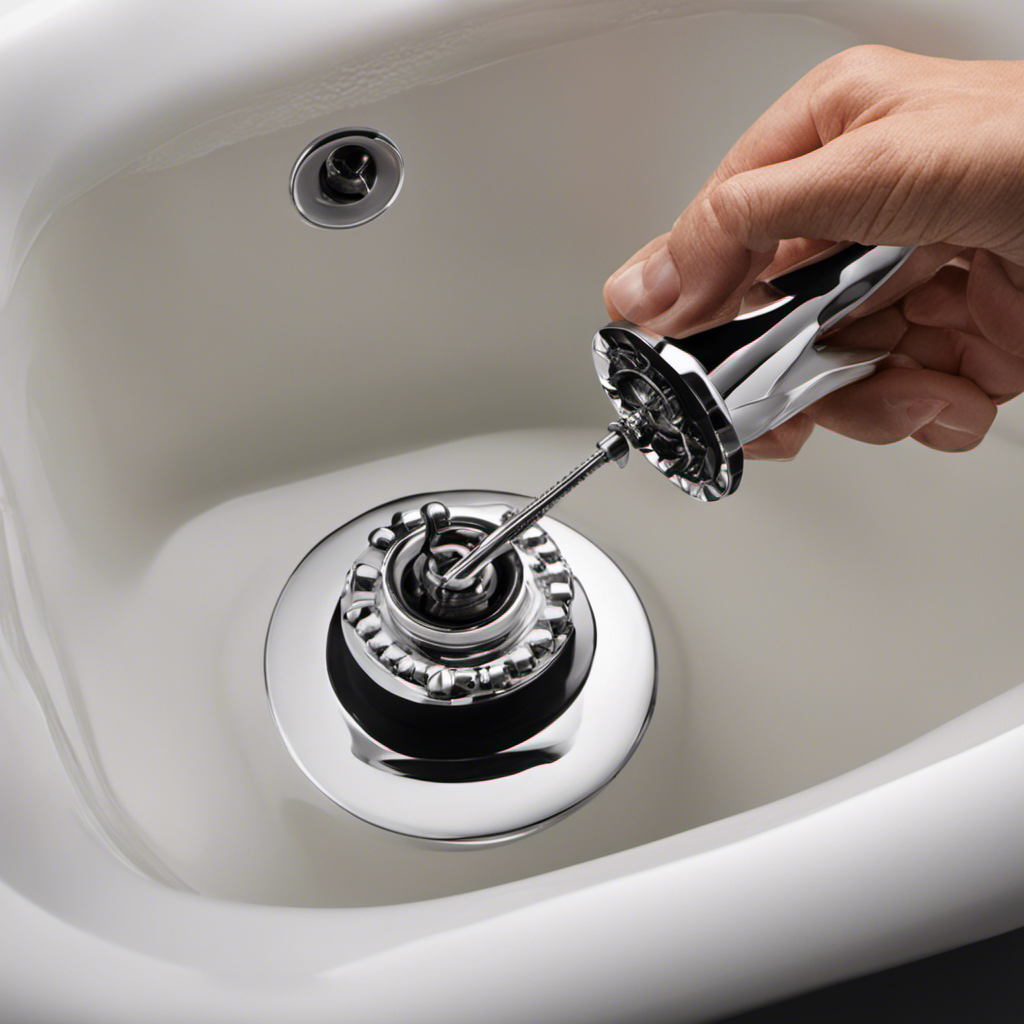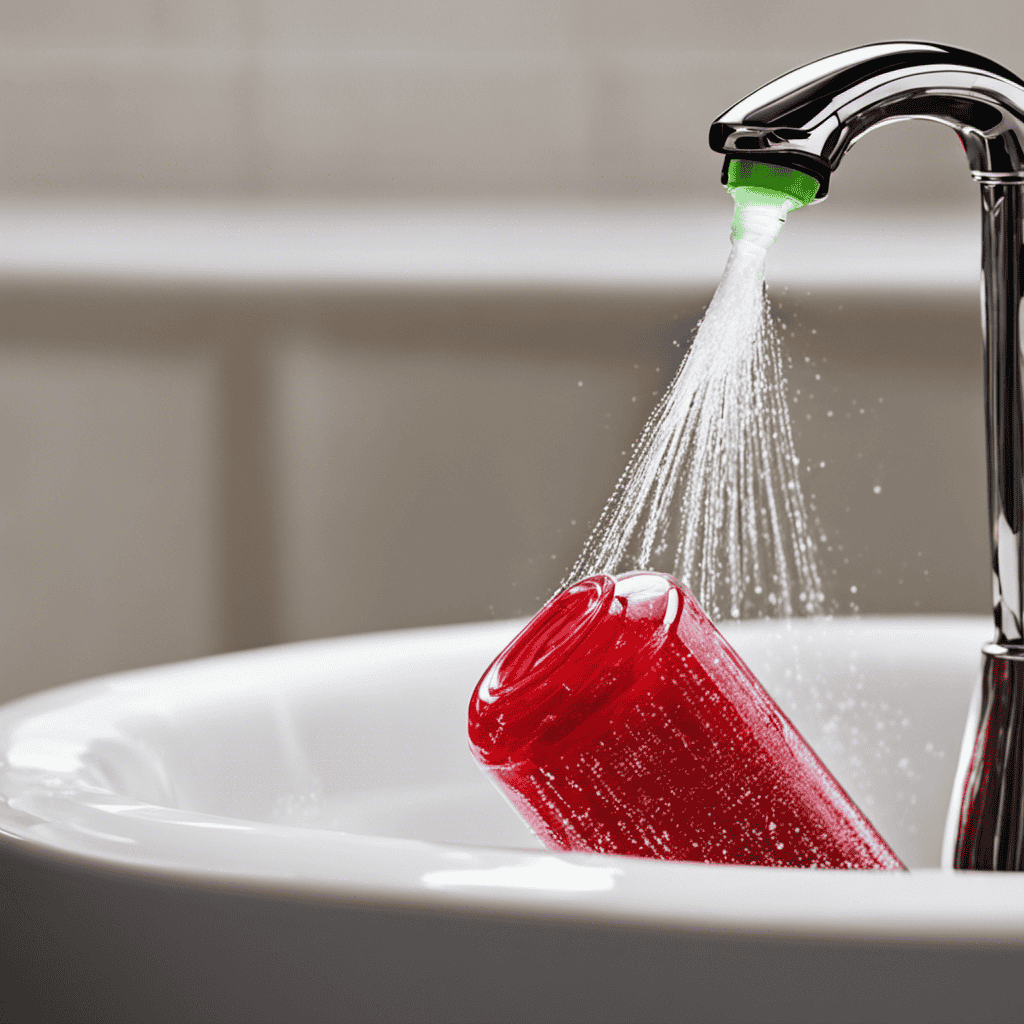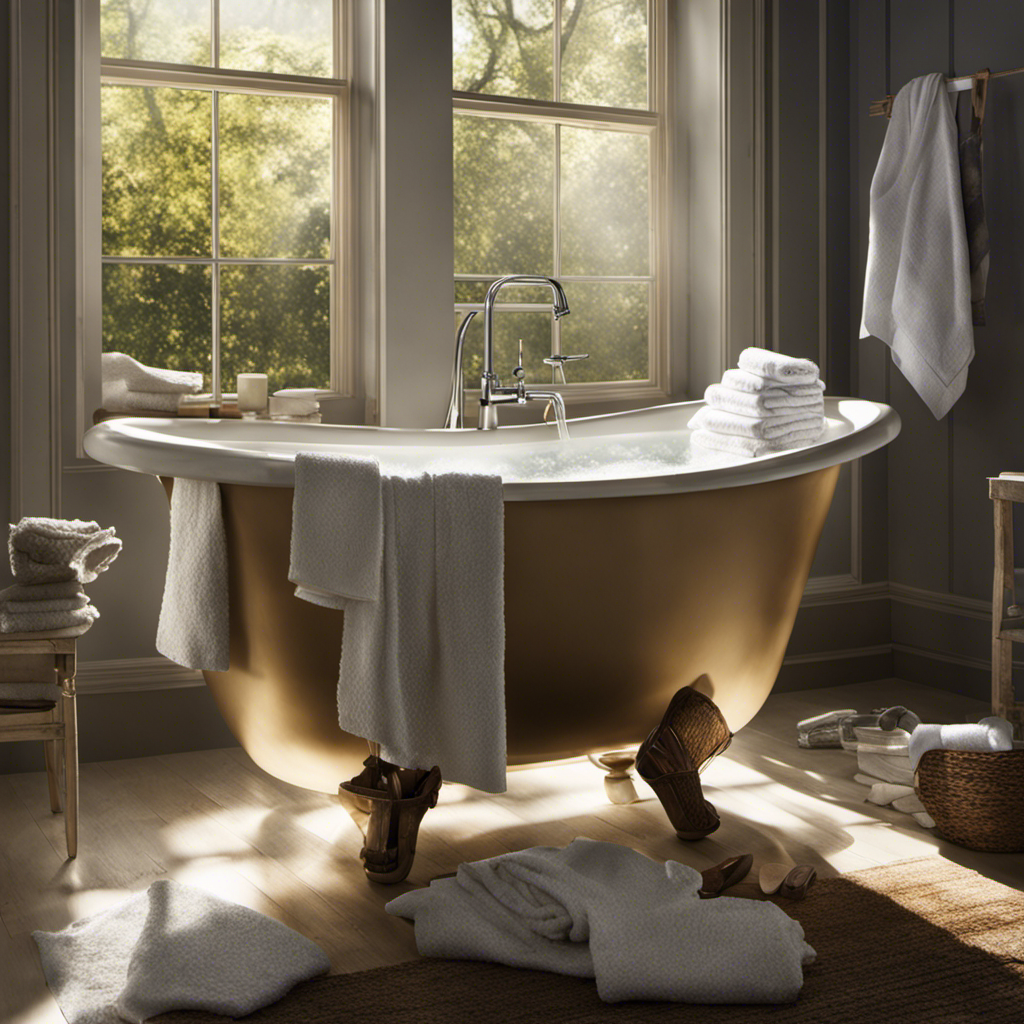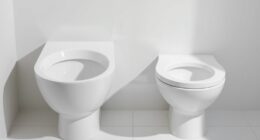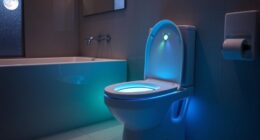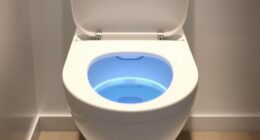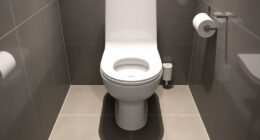As I stood in front of my bathtub, I couldn’t help but wonder, ‘Why are there ants in my bathtub?’ It’s a common problem that many of us face, and it can be quite perplexing.
In this article, I will delve into the fascinating world of ant species that invade bathrooms, the factors that attract them to these wet environments, and the effective strategies for removing them.
So, let’s roll up our sleeves and explore the science behind these tiny intruders.
Key Takeaways
- Ants are attracted to moisture and food residues, making bathrooms with water sources and food crumbs a prime location for infestation.
- Understanding ant behavior in wet environments, such as their ability to seek shelter in dry areas and enter through small cracks, helps in taking preventative measures.
- Using a mixture of vinegar and water can act as a natural ant repellent by disrupting ant scent trails.
- Preventing ant infestations in the bathroom can be achieved by regularly cleaning up food residue, sealing gaps or cracks, using natural ant deterrents, and keeping the bathroom clean and dry.
The Ant Species That Invade Bathrooms
The ants that invade bathrooms are typically seeking water and food sources. Among the common bathroom pests, the most frequently encountered ant species include the Argentine ant (Linepithema humile), the odorous house ant (Tapinoma sessile), and the ghost ant (Tapinoma melanocephalum). These ants are attracted to the moisture and food residues commonly found in bathrooms. Understanding the behavior and characteristics of these ants can help in devising effective control strategies.
To deter ants from invading bathrooms, natural ant repellents can be used. For instance, a mixture of vinegar and water can be sprayed around the bathroom to disrupt ant trails and discourage their presence. Additionally, essential oils such as peppermint, lemon, or tea tree oil can be applied as a natural ant repellent. These oils contain compounds that ants find unpleasant and can act as a deterrent.
Factors That Attract Ants to Bathrooms
Factors like moisture and food crumbs left behind can attract ants to bathrooms. Understanding the factors that influence ant behavior can help us prevent these tiny invaders from taking over our bathrooms.
One key factor is moisture, as ants are attracted to areas with high humidity levels. Bathrooms provide the perfect environment for ants due to the presence of water sources like sinks, showers, and leaky pipes.
Additionally, food crumbs left behind can serve as a food source for ants. They are particularly attracted to sugary substances and leftovers, making our bathrooms a potential treasure trove for these pests. Common ant species found in bathrooms include the odorous house ant and the Argentine ant. Both species are known for their ability to infest and colonize indoor spaces, making it crucial to address the factors that attract them.
Understanding Ant Behavior in Wet Environments
To prevent ants from infesting your bathroom, it’s important to understand how they behave in wet environments.
Ants are highly adaptable creatures, and their behavior can vary depending on the conditions they encounter. In swimming pools, for example, ants are attracted to the water due to its moisture content. They may accidentally fall in while searching for food or be drawn to the water as a source of hydration.
In rainy weather, ants may seek shelter in dry areas, including your bathroom. They can enter through small cracks or gaps, seeking refuge from the wet conditions outside.
Understanding these behaviors can help you take preventative measures, such as sealing entry points and ensuring proper drainage, to keep ants away from your bathroom.
Effective Strategies for Removing Ants From Your Bathtub
If you want to effectively remove ants from your bathtub, one strategy you can try is using a mixture of vinegar and water as a natural ant repellent. Ants are attracted to the water source in your bathtub, and the vinegar smell disrupts their scent trails, making it difficult for them to find their way back.
To create the mixture, simply mix equal parts of vinegar and water in a spray bottle, and then spray it around the areas where ants are present.
Another effective strategy is to identify and eliminate the source of the ant infestation. Check for any cracks or gaps in your bathtub where ants may be entering from, and seal them with caulk or silicone.
Additionally, keep your bathtub clean and dry to discourage ants from coming back.
Using these natural remedies can help you get rid of ants in your bathtub without using harmful chemicals.
Preventing Ant Infestations in the Bathroom
To prevent ant infestations in your bathroom, regularly clean up any food residue or spills, as these can attract ants and encourage them to invade your space. Ants are common bathroom pests that are often attracted to moisture and food sources.
Here are some DIY ant repellents that can help keep them away:
- Seal any gaps or cracks in the walls, floors, or plumbing fixtures to prevent ants from entering your bathroom.
- Use natural ant deterrents such as vinegar, lemon juice, or peppermint oil to create a barrier that ants will avoid.
- Keep your bathroom clean and dry by promptly fixing any leaks, drying wet surfaces, and regularly cleaning drains and pipes.
Frequently Asked Questions
How Can I Get Rid of Ants in My Kitchen?
To get rid of ants in my kitchen, I would use natural ant repellents like vinegar and cinnamon. If the infestation persists, I would consider seeking professional pest control services for a more effective solution.
What Are Some Natural Remedies for Eliminating Ants in the Bathroom?
Natural remedies and DIY solutions are effective in eliminating ants in the bathroom. By using ingredients like vinegar, lemon juice, or essential oils, you can create repellents that deter ants from invading your bathtub.
Can Ants in the Bathtub Harm Me or My Family?
No, ants in the bathtub do not pose harm to me or my family. They may be attracted to water or food residue, but they do not spread diseases. DIY methods like sealing cracks can prevent their entry.
Are There Specific Types of Ants That Are More Commonly Found in Bathrooms?
There are common bathroom pests like ants that can be found in bathrooms. To prevent ant infestations, it is important to keep the bathroom clean and free of food debris that may attract them.
How Do Ants Find Their Way Into My Bathroom in the First Place?
Ants find their way into my bathroom through cracks and crevices. They communicate using pheromones to guide others. To prevent their entry, seal any openings and keep the area clean to eliminate food sources.
Conclusion
In conclusion, the presence of ants in your bathtub can be attributed to various factors. These factors include the specific ant species that are drawn to wet environments, as well as the attractants present in your bathroom. Understanding ant behavior and implementing effective strategies for removal are crucial in dealing with this issue.
Just like a scientist unraveling the mysteries of nature, by taking preventive measures, you can ensure that your bathroom remains free from ant infestations. This will prevent these tiny invaders from taking over your serene oasis.

